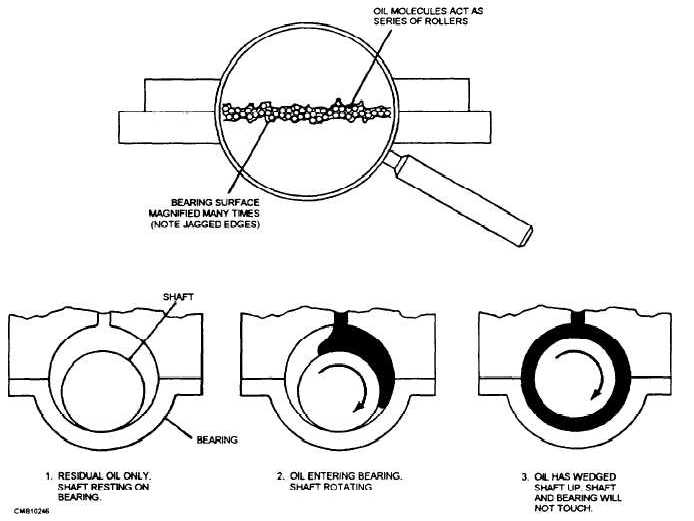lubrication, an engine quickly overheats and its working parts seize due to excessive friction. All moving parts must be adequately lubricated to assure maximum wear and long engine life.
PURPOSES OF LUBRICATION
The functions of an engine lubrication system are as follows:
Reduces friction and wear between moving parts (fig. 6-18).
Helps transfer heat and cool engine parts.
Cleans the inside of the engine by removing contaminants (metal, dirt, plastic, rubber, and other particles) (fig. 6-19).
Absorbs shocks between moving parts to quiet engine operation and increase engine life.
The properties of engine oil and the design of modern engines allow the lubrication system to accomplish these functions.
ENGINE OIL
Engine oil, also called motor oil, is used to produce a lubricating film on the moving parts in an engine. The military specification for this type of oil prescribes that the oil shall be a petroleum or synthetic petroleum product or a combination thereof. This oil is intended for lubrication of internal-combustion engines other than aircraft engines or for general-purpose lubrication.
Oil Viscosity and Measurements
Oil viscosity, also called oil weight, is the thickness or fluidity (flow ability) of the oil. A high viscosity oil is very thick and resists flow. A low viscosity oil is very thin and flows easily.

Figure 6-18. - How oil lubricates.
Continue Reading